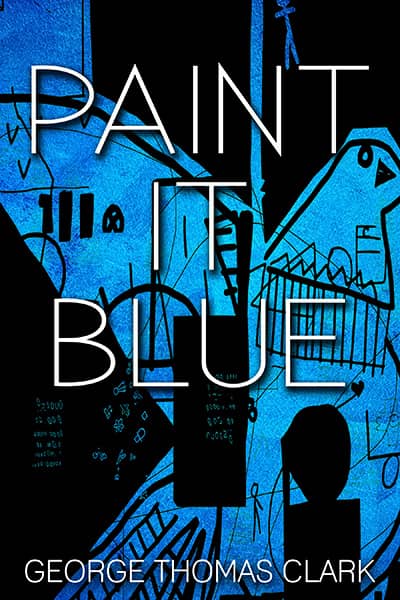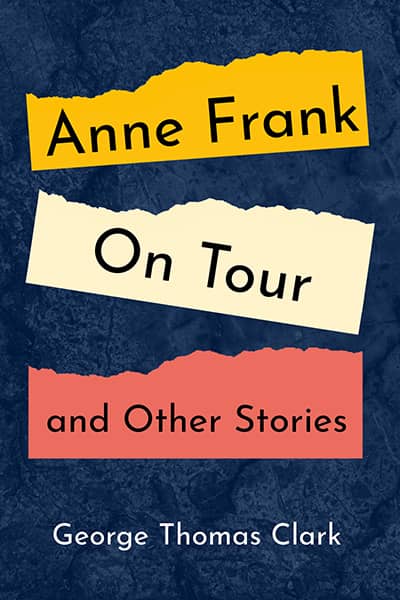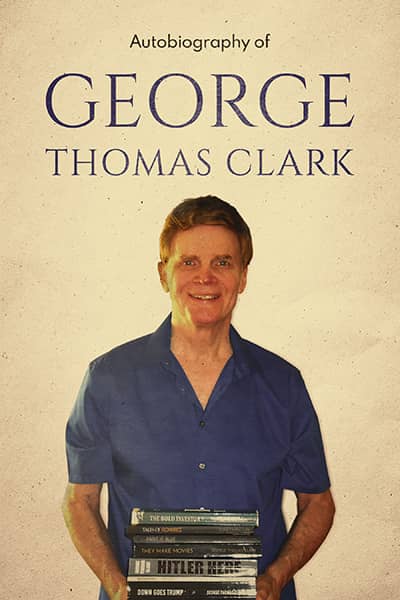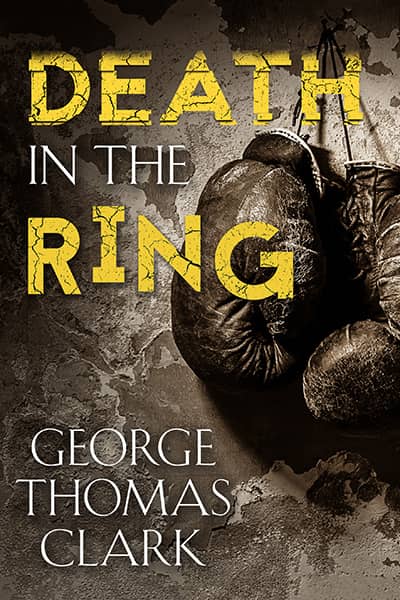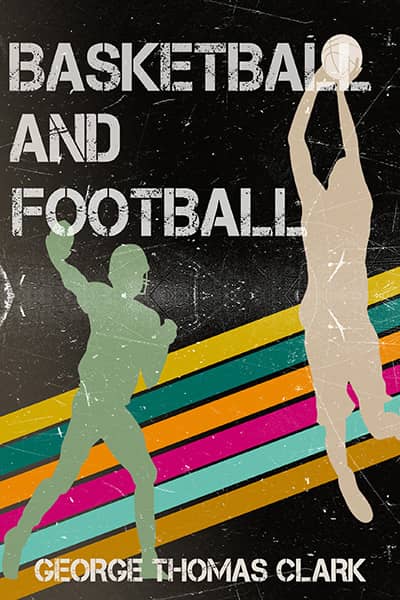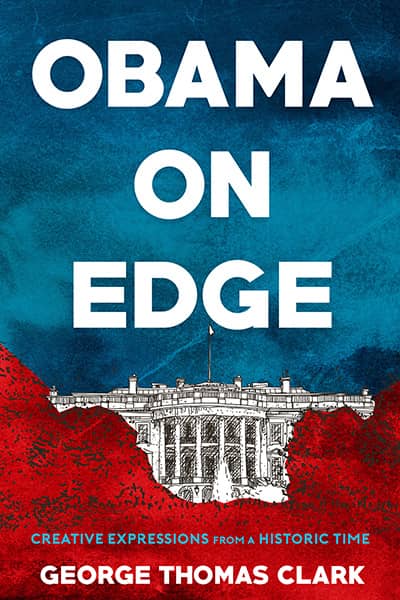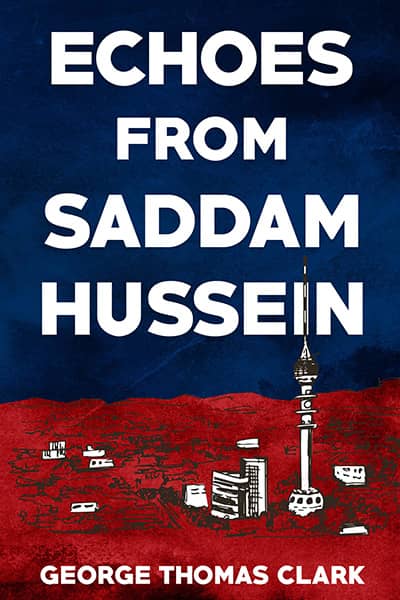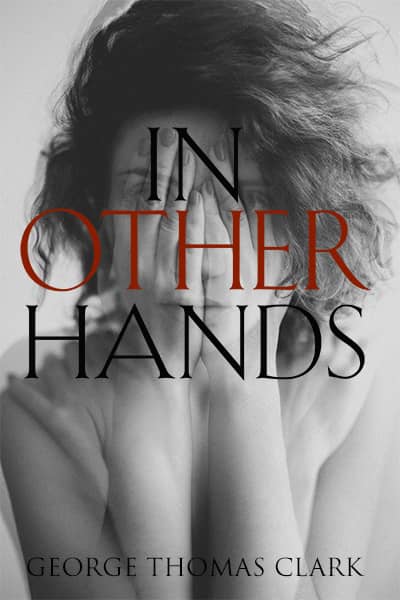Myriam Gurba Publishes Another Book
September 11, 2023
Myriam Gurba has just published another book – Creep, a collection of essays – so it’s a good time to reprint my creative feature “Who’s Myriam Gurba?” which originally appeared in October 2020.
Gurba is a feisty, talented, and photogenic writer and social activist. Whether or not readers agree with her opinions, she entertains with a deft literary touch.
I receive many newsletters and one of them is Electric Literature but I usually don’t have time to read fairly long stories since I’m at the computer to write unless something rivets me like this emailed headline: “It’s time to take California back from Joan Didion. Myriam Gurba writes that the first lady of West Coast letters needs to share that honor with the Mexican Diaspora: ‘California belongs to Joan Didion because her ancestors stole it.’”
I eagerly click the link, thinking, “Hold it, Ms. Gurba, racism is a universal flaw, and since you broach the issue of land acquisition, whose ancestors ‘stole’ California from the indigenous people before Didion’s forefathers moved in?” The Spaniards were the original conquistadores of the future Golden State as well as in much of the Southwest and Mexico and Central America and South America. The progeny of Moctezuma and his Aztec subjects are likely more aggrieved by images of Hernán Cortés than of General Sam Houston.
Let’s pivot back to the subject of Joan Didion, whom Myriam Gurba considers an “onion” because “she’s very white, very crisp, and she makes people cry.” Not nice or particularly relevant but it’s clever. She writes a lot of intriguing phrases. Even in high school Gurba nicknamed Didion “the windy bitch” after empathizing with her essay “Los Angeles Notebook.” Remembering this title from her seminal collection Slouching Toward Bethlehem, I retrieve my reading tablet and light up the book, and imagine Gurba has done the same with this essay as well as two others to be discussed in a moment.
In “Los Angeles Notebook” Didion evokes “something uneasy in the… air this afternoon, some unnatural stillness, some tension.” And this leads to “hot winds from the northeast whining down through the” passes and “drying the hills and the nerves to the flash point.” After that people get tense and some kill themselves or others and even eject corpses from moving automobiles, and people from other countries also misbehave when besieged by “malevolent winds.” Gurba writes an equally arresting passage about her experience with the Santa Anas, concluding “invisible hands” of the windstorm “grabbed my dark hair, winding it around my neck, garroting me.”
Perhaps Gurba is simply looking for narrative tension when she scolds Didion for failing to mention the Santa Anas “are more than winds.” They’re people such as General Santa Anna, conqueror of the Alamo, and splendid guitarist Carlos Santana. Gurba may also want to kick Didion’s ass for the heavyweight title of Santa Ana winds. She certainly likes rhetorical catfights and contrives one, later in this essay, when Didion writes of rushing to the supermarket in her bikini and a hefty woman rams her cart into the author’s and rebukes her, “What a thing to wear to the market.” Unsatisfied with this didactic measure, the tormentor hounds Didion “all over the store, to the Junior Foods, to the Dairy Product, to the Mexican Delicacies…”
Hold it right there, you windy onion, Myriam Gurba erupts: the “PUNCHLINE” ending this scene “is the only time the word Mexican appears in this iconic essay,” so it’s imperative to rebel “against Didion’s racial grammar… (and) unseat her as California’s thin-lipped literary grand dame.”
Before moving to the next alleged racial transgression of Joan Didion, I’ll share my only personal, albeit secondhand, anecdote about the sage from Sacramento. Thirty years ago, long after my contemporaries had graduated from college, I returned to the academic saddle for about the tenth time, having considered myself too busy with independent study and writing to attend class or do homework. One of my English teachers was a sixtyish fellow proud to regularly tell us, “After class I’m going to go jogging with my young woman,” she being his girlfriend. I wish I’d asked her age but settle for the following exchange.
“Joan Didion was in my class when I taught at McClatchy High School in the early 1950s,” said the vigorous professor.
“What was she like?” I asked.
“She was mousy. I’d tell her not to walk in the halls during my lectures and she’d come in late and tell me she’d done exactly what I told her not to.”
Myriam Gurba, a teacher as well as writer, evidently feels Didion needs more classtime to understand she’s using “racial grammar” in the essay “Guaymas, Sonora.” From the opening sentence Gurba pounces, first because it’s a “run-on” and next because of disturbing implications: “It had rained in Los Angeles until the cliff was crumbling into the surf and I did not feel like getting dressed in the morning, so we decided to go to Mexico, to Guaymas, where it was hot.”
What’s the problem? Gurba concludes Didion thinks “México is something for gringos to do in their piyamas… on rainy days. It’s a pastime and the point of doing México is similar to the point of camping.” She’s further offended that Didion doesn’t paint a lovely landscape, but the onion isn’t describing Puerto Vallarta. She’s saying “the desert, any desert, is indeed the valley of the shadow of death.” Didion and “Mr. Joan Didion,” who in fact was distinguished author John Gregory Dunne, could’ve driven to Barstow or Needles, hot and foreboding spots in the United States, but they wanted a different language and vibe and sought relaxation in a place foreign but nearby. They didn’t head south to gawk at el diablo.
We now proceed to the subject of cannibalism, which often recalls images of the Donner Party. Since childhood, Gurba writes, she’s been “titillated” by the party’s eerie downfall and “always believed that the pioneers who suffered got what they deserved.” They ate two Indians and a Mexican along with white friends and relatives but, if only three corpses would’ve provided sufficient protein, we know the names on the menu during that era of frenzied Western expansion and destruction of indigenous and Mexican communities. Didion views the nightmare more personally, accepting what she was taught as a child: members of the Donner Party “had somewhere abdicated their responsibilities, somehow breached their primary loyalties, or they would not have found themselves helpless in the mountain winter.” She believes they at least did not break the “vestigial taboo” of eating their own kin. I disagree.
My deflection of a few punches at Didion is of interest but tangential to my primary discovery: Myriam Gurba writes good prose. So, who the hell is she? To learn more I summon Señor Google and think what a pretty lady, tiny and with a sculpted face reminiscent of Frida Kahlo. Other similarities we’ll later discuss. Check out the heat – perhaps firestorm is more accurate – generated by her recent book review titled, “Pendeja, You Ain’t Steinbeck: My Bronca with Fake-Ass Social Justice Literature.” Using my high-intermediate Spanish supplemented by computer, I read that as, “Bitch,” you ain’t… “My Row with…”
One must guard against hasty hyperbolic opinions, but many online readers will nod when I say, “That’s the most kickass book review I’ve read.” Reviews generally bore me, yet I’ve already reread Gurba’s twenty-five hundred words. Who’s the target of such sass? She is Jeanine Cummins, author of American Dirt, a novel about a Mexican mother and son fleeing Acapulco-based narcotraficantes who’ve just murdered sixteen family members, including the lady’s husband, at a quinceanera. Sounds like an entertaining story. Publishers had to bid to buy it and Flatiron Books paid seven figures. American Dirt rocketed to bestseller status, Oprah blessed it for her book club, and movie rights have already been sold. So, what’s the matter?
In her review Gurba quickly slaps readers with some street lingo, noting the book “sucks. Big time. Her obra de caca” (work of shit) is guilty, “in the great American tradition” of “appropriating genius works by people of color; slapping mayonesa on them to make palatable” to readers in the United States; and “repackaging them for mass racially ‘colorblind’ consumption.”
Ms. Magazine originally hired Gurba to write a review for six hundred fifty bucks but rejected her effort because she wasn’t famous enough to write a “spectacular” takedown in such a “negative” way. Ms. instead sent her a kill fee of thirty percent. She posted the review free on an academic website. The organ of women’s liberation needed something more genteel than lines like this, “Pity inspires (gringos’) sweet tooth for Mexican pain… resulting in a preference for trauma porn that wears a social justice fig leaf.”
Gurba also opines that Cummins “bombards with clichés” and misuses Spanish words “yielding the same effect as store-bought taco seasoning” and conveys a “landscape of carnage” that will confirm the fears of Trump followers and presents a heroine, Lydia, who is “shocked by… day-to-day realities” that are well known to Mexicans and, most galling, Cummins and her editors believe she is the “savior” here to “represent faceless brown people.”
There’s plenty more all tight and polished.
I buy American Dirt, as well as Myriam Gurba’s memoir Mean, and blaze through the latter while struggling with the blockbuster. In defense of Jeanine Cummins, I must note that I’ve always been an indifferent and often unwilling reader of novels. I prefer literary nonfiction and short stories, and usually mention that when longer works of fiction are discussed. At this moment it’s far more helpful to let Gurba and Cummins discuss this matter. They dare not do so in person, of course.
* * *
Zoom enables the fantasy combatants to see each other while millions of pay-per-view fans watch on giant screens throughout the Americas.
“Myriam, your bitter diatribe has caused me a lot of pain,” says Cummins.
“I’m not bitter, I’m angry. A few years ago you called yourself a white woman. Now, suddenly, you’re Latinx based on one of your grandparents coming from Puerto Rico.”
“I’ve reconsidered my family history as well as that of North America. I’ve read dozens of books on the experiences of Mexicans at the border and the rest of the country and I’ve talked to countless people.”
“That doesn’t make you a Mexican,” says Gurba.
“I never said or implied that it did. I was moved by stories of the Mexican people and needed to try to write something about them.”
“You failed, as I’ve so forcefully articulated.”
“Incorrect. The majority agrees with me. I’ve been on the New York Times bestseller list four months, and ninety percent of my Amazon reviews are four or five stars.”
Shaking her head, Gurba says, “Predictable. You’ve got your white audience locked in.”
“That’s very disingenuous, Myriam. I don’t believe you’re unaware that several distinguished Latina writers have praised my work.”
Cummins picks up a paper and shakes it. “Sandra Cisneros says, and I quote, ‘This book is not simply the great American novel. It’s the great novel of Las Americas. It’s the great world novel. This is the international story of our times. Masterful.’”
“I admire Cisneros,” says Gurba, “but that’s the most fulsome utterance I’ve ever heard.”
“Here’s what Julia Alvarez thinks. ‘Riveting, timely, a dazzling accomplishment. Cummins makes us all live and breathe the refugee story.’”
“Nonsense.”
“Listen to Reyna Grande. ‘I found it compelling. I noticed its shortcomings, the things she got wrong about our culture and experience, but saw past them.’”
“I don’t see past your errors and arrogance.”
“My next book is about a gay Chicana writer from California. I’d like to hire you to fact check.”
“Bitch, please.”
* * *
I’m back online learning more about Myriam Gurba. She frequently describes herself as a gay or queer writer, and that is fine but will later confuse us. Meanwhile, reading Mean, I appreciate her stylistic precision and wicked tongue.
When Myriam was about five, her mother, the most beautiful woman her daughter had ever seen, almost died during the birth of twins and had to be evacuated to the hospital at Stanford University. Her father quickly followed, and Santa Maria neighbors took care of the little girl. They were white, “and that’s not necessarily a good thing.” One night, Myriam writes, the white lady of the house prepared a fine meal that included Brussels sprouts and four delicious parfaits that had enlivened Myriam’s taste buds as she watched them being prepared. During dinner she cleaned her plate except for those damn Brussels sprouts. Eat those, Myriam. No, said the girl. Either eat your vegetables or no dessert, the lady warned. Myriam still refused, and watched the couple and their child down their delights, and years later she recalls that the family “looked cold and evil. They looked like American presidents.” But I bet they looked better than Carlos Salinas de Gotari.
An ostensibly tough little girl is growing up in sunny Santa Maria a hundred sixty miles north of Los Angeles. She sees who the enemies are, and most are white and many male. Indeed, she states that “being rude to men who deserve it is a holy mission. Being a bitch is spectacular.” As we’ll see decades later, she was more correct than she imagined. Even then she should’ve loudly rebuked the boy in her class, sitting at the same table, who routinely reached below and rubbed between her legs. And the teacher, from his nearby desk, once stared at them as the violation occurred yet did nothing.
White female writers were also deficient. Joyce Carol Oates bored her. So did precocious Anne Frank, in her mid-teens hiding from Nazis in the crowded annex in Amsterdam. She never finished The Diary of Anne Frank. She nevertheless devoured books in high school and blew away all the white kids in college prep essay writing. Read Mean and the two book reviews earlier described, and you won’t doubt that.
During this period of literary development, Myriam reveals she began kissing and touching some of the girls from school. These urges had appeared no later than age eight when another young girl showed her copies of Playboy and similar magazines. Seeing the pussy and tit photos dazzled her, and she “loves tits… (and) knew I wanted to connect my body to these bodies, and the faces mattered, especially the lips and the eyes… They communicated an invitation… and I was ready to ask the women to marry me.”
Upon graduating from high school in 1995 Myriam took her passions to the University of California, gaining entry in part because of affirmative action. She was a qualified student but needed to adjust to new academic styles and standards after receiving an appalling C on an English paper. She also got a C for the course and that dastardly grade rankles still. Her first year at Cal nevertheless ended satisfactorily and she returned to Santa Maria for summer vacation.
Myriam notes she wanted to free read after an academic year of studying what others dictated, and she did, but she also wanted to interact with people in a stimulating environment. That’s often a challenging goal, especially in a small isolated city like Santa Maria. She found a volunteer position in a small art museum. One of her fellow docents, an elderly lady, had once volunteered at a women’s center, which I’d call a shelter. She told Myriam, “I think some of the women liked it… (One lady’s) husband had stuck his rifle inside of her and threatened her. She stayed with him. How could you… if you didn’t like it?”
“I thought I understood how a lady could battle a situation like that but stay with it, but I felt ill equipped to explain this paradox,” Myriam writes twenty years later, expressing fear and confusion that enveloped her around age forty in Long Beach. “I always get crushes on people who are mean to me… I’m mean but I’m not so mean I’ve ever raped anyone.”
Back in Santa Maria for the summer of 1996, nineteen-year-old Myriam remembers walking through a nice neighborhood in the afternoon, headed for the elementary school where her mother taught. The scent of nearby flowers and trees soothed her until “hands circled my rib cage and slid down my waist… He lifted my skirt. Fingers were inside me, his breath and mouth were on me, and the rest of the details belong to me.”
After the man finished he ran away and she pursued him until she realized she was “a mouse chasing a lion.” In a few weeks, feeling or at least hoping she was all right, Myriam returned to Cal for the fall semester and dedicated herself to studying, exercising, and dieting. She also cut her luxuriant dark hair in the style of “G.I. Jane.” In this time of intense discipline, which she believes was a response to PTSD, she neglected one necessity, failing to eat enough, and one morning passed out in a university gym.
* * *
Myriam Gurba begins Mean with a taut and lyrical scene about a lady being raped, murdered, and mutilated in a Santa Maria park. We later learn her name is Sophia Torres. She is the second most important character in the book, though we never meet her, and forever a part of Myriam’s soul. Sophia lived in Arizona with a boyfriend who was murdered. She retreated to Santa Maria, we don’t know why, and worked in the fields and appeared depressed and lonely and then a man killed her.
Between early November and December he assaulted three other women who survived. He’d also attacked Myriam a few months earlier. She was his first known victim. Tommy Martinez, a young man her age, was arrested during her 1996 Christmas break. She decided not to cooperate with the district attorney. There was already plenty of evidence to put Tommy Martinez on death row. He still resides there.
“I was not going to go down in local history as the girl who was weirdly raped by the Mexican guy who murdered the lady in the park,” she writes.
After escaping back to Cal she earned excellent grades and occasionally, but without evident pleasure, dated men. Instead, with glee, she announces, “Every night was ladies’ night.” She pursued her passions in many hotspots in what legendary columnist Herb Caen called Baghdad by the Bay. Clubbing got boring, we assume, and Myriam met a “masculine” blond lady she soon refers to as her wife and, after graduating with honors in history, they lived together in Berkeley before moving to Long Beach where, ultimately, she became a history teacher.
* * *
Myriam Gurba shares more piquant observations and experiences before Mean ends but her story continues on a variety of websites. We want to know more and, clearly, she wants us to have the information. I review her Facebook photos and click on a typewritten page I originally skipped. It’s the first of ten full pages of narration that comprise a DV-100 Request for Domestic Violence Restraining Order. I’ll briefly summarize the nightmare described. She began dating a male teacher early in 2015 and they “dated off and on” for three years. Myriam alleges he used “coercive control to abuse and entrap me. He subjected me to intimidation, humiliation, degradation, isolation, and violence. He strangled me, raped me…” and plenty more for about three thousand words. I’m saddened to learn of these experiences.
I’m also stunned that talented and educated Myriam Gurba waited three years to take action. Her “boyfriend” had been tormenting her a long time before he raped her, yet she stayed in the relationship. Understandably, she was terrified of a violent man a foot taller and hundred pounds heavier. But she had options. The first, and I say this to all ladies and other victims of criminal abuse, pick up the phone and dial nine-one-one. Don’t make excuses. Pick up the damn phone after the first outrage. I’m reminded of Maya Angelou’s dictum: the first time people show you who they are, believe them.
I call a good friend who’s a former district attorney and ask him to read the first page of the DV-100 and tell him more about Myriam Gurba.
“I’m surprised a tough and teacher-credentialed woman like Myriam would tolerate all that abuse,” I say.
“I am, too,” says the attorney. “But maybe she’s not as tough as people think. I’ve seen too many cases of women taking this.”
Remember Myriam’s ominous words quoted above about submitting to violence that pervaded her state of mind shortly before being raped in 1996 as well as in recent years: “I always get crushes on people who are mean to me.”
That recalls my experience of long ago dating a beautiful young woman whose mother told me her daughter didn’t like nice guys like me. She preferred guys who beat her up.
Whatever Myriam Gurba’s feelings may have been two years ago, she still seeks retribution on social media, particularly Twitter. During a frenzied half-hour in early June, she tweeted on this subject six times. Among other assertions: “The law is set up to protect male batterers… (The cop) wanted to know why I didn’t scream while I was being strangled… He was disgusting and he was a DOMESTIC VIOLENCE DETECTIVE… When I reported to a cop that my boyfriend had told me he had been thinking about killing me, the cop told me not to sorry: all men have those fantasies…”
Since the murder of George Floyd by Derek Chauvin, a Minneapolis police officer, Myriam has been demanding that police departments be “defunded.” And how will that work? She tweets, “For the folks wondering who will catch the rapists and robbers if the police cease to exist, understand that the police have never been interested in catching themselves… This country is a haunted house… FUCK THE POLICE TO INFINITY AND BEYOND…”
Myriam sometimes headlines her tweets: “White People…” In one she posted a picture of abolitionist John Brown and said whites should be like him. In fact, most are. They’re repulsed by slavery. Still, Myriam regularly bemoans racist whites, racist administrators, and racist teachers, but her ardor, properly focused or not, sometimes causes problems. A few months ago some school officials, without warning, escorted her off campus at Long Beach Poly High School where she’d been a popular history and psychology teacher. Myriam told the Los Angeles Times, “They said my social media was disruptive to the school.” She was placed on paid administrative leave. She’d been campaigning online against Libby Huff, a Poly teacher some students allege addressed them with racially vile language.
No mas of that. Let’s follow some links and journey deeper into happy Facebook and find masked Myriam in a print bathrobe standing on apartment stairs, masked while kissing ace photographer and good friend Geoff Cordner, also masked, Myriam unmasked lazing in bed with a beautiful cat whose eyes glow, masked in profile in a forest, masked in the desert, masked on a cloud-covered Highland Park street, masked entering a carniceria, unmasked jogging on a hillside trail, muscular in a bikini tiptoeing toward the sea, hooded in the Denver snow, under a sombrero in front of a rocky mountain, one of her small hands enveloped in a large male hand.
I step to a bookcase and retrieve Frida Kahlo, The Camera Seduced. If you’ve looked at these photos you haven’t forgotten them. If they’re new, be prepared for the graceful and emotional presence of an artistic lady speaking to you. Online you may be moved looking at images of Myriam Gurba, an athletic new-century version of the broken lady who wielded the beautiful bloody paintbrush. There needs to be a book of these photographs. Myriam and her muse probably already have publishing plans. If they don’t, I’ll work something out with Diego Rivera.
* * *
Activating my heavenly cell phone, I say, “Hola, Diego. This is Tom. How’s it goin’?”
“Wonderful. And you?”
“Pretty fair. What year are you in? Not 1954, I hope.”
“Definitely not. We never go there anymore. We spend a lot of time in 1929.”
“The year of your wedding.”
“Our first wedding.”
“Your best one.”
“Indeed,” he says. “I’m painting now.”
“Yes, and I’ve got someone for you to paint.”
“I don’t do commissions anymore.”
“You’ll paint her for free,” I say.
“Why would I?”
“Her skeletal structure. And the intangibles.”
“Okay, Tom. Send her to my San Angel studio tomorrow morning, but not till Frida leaves.”
“Hold it, Diego. You’re going to behave professionally, aren’t you?”
“But of course.”
Notes: We emailed Myriam Gurba the option to be interviewed for this ebook but received no reply.
Sources
Myriam Gurba – Mean, a true-crime memoir published by Coffee House Press, 2017. “Pendeja, You Ain’t Steinbeck: My Bronca with Fake-Ass Social Justice Literature” on Tropics of Meta, December 12, 2019. “It’s Time to Take California Back from Joan Didion” on Electric Literature, May 12, 2020. There is also much information on social media, most of it written and posted by Myriam Gurba. Scores of photographs of her were taken by her friend Geoff Cordner.

